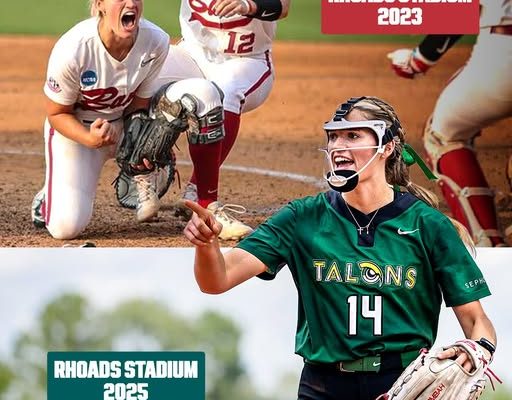When Alabama hired Ryan Grubb as its new offensive coordinator, there were questions, curiosity, and eventually growing confidence that this was a seismic shift in the way the Crimson Tide would approach offensive football. Grubb, who had previously been the offensive mastermind at Washington and briefly flirted with the NFL, brings more than just schematic variety to Tuscaloosa. He brings the imprint of a professional mindset—one shaped by the demands of NFL-level preparation, design, and adaptability. That could be exactly what Alabama needs in a post-Nick Saban era that demands both continuity and modernization. The offense at Alabama has historically evolved in response to both necessity and opportunity. From the ground-and-pound days of Mark Ingram and Derrick Henry to the high-octane aerial assaults with Tua Tagovailoa and Bryce Young, Alabama has always managed to stay ahead of the curve. But the arrival of Ryan Grubb could introduce not just another shift in style, but a more permanent philosophical evolution influenced by professional standards. And in the ever-changing landscape of college football, that evolution could be the next cornerstone of sustained dominance.
Grubb’s brief engagement with the Seattle Seahawks this past offseason, though not culminating in a full NFL coordinator role, should not be overlooked. Time spent around NFL coaches and systems—even if unofficial—exposes coordinators to an entirely different football culture. The NFL is a place where every play is designed with precision, and every game plan is tailored to exploit microscopic weaknesses. The margin for error is thinner, and the demand for adaptability is greater. College defenses are often susceptible to tempo and superior talent, but in the NFL, you win with nuanced game planning, disguised intentions, and relentless detail. Grubb’s offense at Washington already reflected some of that NFL flavor. His ability to create passing windows for Michael Penix Jr. through layered route concepts, formation variation, and pre-snap motion looked like a hybrid of collegiate explosiveness and professional structure. Translating that to Alabama, with its elite-level athletes and deep positional groups, could elevate the Crimson Tide’s offense from simply productive to surgically lethal. This is particularly important in the SEC, where defenses are closing the athletic gap on Alabama.
One area where Grubb’s NFL-inspired mind could pay immediate dividends is quarterback development. The position has become the single most important differentiator in both college and pro football, and Alabama has had its share of success stories. Yet in recent seasons, the development process has become less streamlined. With Ryan Grubb in charge, that could change. Grubb’s offense demands that quarterbacks think fast, process coverages post-snap, and control protections—all staples of NFL expectations. That development pipeline could prepare Alabama quarterbacks not only to excel in college but also to transition seamlessly into the pros. For a recruit deciding between Alabama and another powerhouse, that’s a meaningful edge. And for current players like Jalen Milroe, it could mean the difference between being a dual-threat highlight reel and becoming a complete, draft-ready field general. The expectations Grubb will place on his signal-callers will be higher, but so will their potential ceiling.
What also stands out about Grubb’s offensive DNA is how seamlessly it integrates multiple personnel groupings and play packages without sacrificing tempo. That’s a rare combination. In college football, many offenses rely on speed and simplicity to overwhelm defenses. But Grubb’s system is about leveraging complexity while maintaining rhythm. He can run 11 personnel (one back, one tight end, three receivers) on one play and shift to 12 personnel (one back, two tight ends) on the next—all without giving the defense time to substitute. That’s the kind of offensive flexibility that can keep SEC defenses on their heels, forcing them to play “left-handed” more often than they’d like. Alabama has the personnel to do this at an elite level. With multiple NFL-caliber tight ends and a stable of versatile running backs, Grubb won’t have to compromise his designs. Instead, he’ll be empowered to unleash every layer of his playbook.
Then there’s the offensive line. Historically, Alabama’s dominance has started in the trenches. However, in recent years, inconsistency on the offensive line has made the offense more reliant on improvisation and playmaking. Grubb’s system, with its quick-read passing schemes and integrated screen game, can neutralize aggressive defensive fronts and allow the line to play on its toes rather than its heels. It’s not that Grubb’s offense ignores power; it just marries it with finesse. That balance will allow Alabama to control the tempo of games in new ways, dictating pace not just with speed, but with timing, alignment, and design. When your offense can outthink and out-execute an opponent, talent gaps become secondary.
In the red zone, where Alabama has sometimes stalled in recent seasons, Grubb’s creativity could be a game-changer. His Washington teams were among the nation’s best in red-zone efficiency, often using stacked formations, motion decoys, and mismatch isolation to produce touchdowns instead of field goals. These are the areas where NFL-level thinking really shines. It’s not about having more plays; it’s about having better ones. It’s about knowing when to call the screen, when to flood the zone, and when to use the tight end as a decoy. With Alabama’s talent, the red zone should be a place of consistent scoring, not occasional frustration. Grubb’s red-zone philosophy could finally turn it into a guaranteed six points every time.
Another way Grubb’s NFL experience could benefit Alabama is in the way he studies film and prepares game plans. NFL coordinators don’t just script plays—they script situations. That level of detail allows teams to be better prepared for 3rd-and-short, 2nd-and-long, or 4th-and-medium scenarios. These are often the moments where games are won or lost. In the college game, many coordinators still rely on rhythm and flow to call plays. But with Grubb, expect Alabama to be more methodical and prepared situationally. That attention to detail can manifest in everything from smarter audibles to better two-minute execution. Alabama already wins with talent. Winning with preparation will make them nearly impossible to stop.
Grubb’s influence could also shift the way Alabama recruits offensive players. Under previous regimes, Alabama was already a recruiting juggernaut, but the offensive profile often leaned toward system fits. With Grubb’s NFL-minded system, the emphasis may shift to players with high football IQ, route precision, and vision. Quarterbacks who want pro-level prep, linemen who want to play in a multi-look offense, and wideouts who want to master NFL route trees will find Tuscaloosa even more attractive. And in the age of NIL and the transfer portal, offering both playing time and professional development is a major recruiting edge.
Perhaps most importantly, Ryan Grubb represents a mindset change at Alabama. While the program has always been about excellence, it has at times resisted innovation, especially when it conflicted with traditional philosophies. Grubb’s arrival signals that Alabama is not just open to change—it’s embracing it. It’s not about abandoning the past; it’s about enhancing it. The power, discipline, and toughness that defined Saban-era Alabama will remain foundational. But with Grubb, the offense becomes a more sophisticated machine, one capable of evolving in real-time to outsmart the best defensive minds in college football.
Of course, success won’t come overnight. Installing a new offense takes time. There will be growing pains as players learn new terminology, new techniques, and new timing. The Spring and Fall practices will be critical, not just for implementation but for establishing confidence in the system. But once the players buy in—and they almost always do when the results follow—the ceiling could be higher than anything Alabama has seen in recent memory. And that’s saying something for a program that’s won multiple national titles in the past decade.
There is also the matter of identity. With Saban gone, the program needs new pillars of leadership and philosophy. Grubb’s offense, if successful, could become one of those pillars. It could shape the way Alabama plays, recruits, and thinks for the next decade. And in doing so, it could serve as a bridge between the Saban legacy and the program’s future. In college football, where coaching turnover is inevitable, systems often outlast people. If Grubb’s system takes root, Alabama could enjoy a new kind of continuity—one not based on tradition alone, but on a living, evolving football doctrine.
The Alabama faithful will always love hard-nosed defense and power running, but they’ve also come to love the fireworks that come with elite quarterback play and dynamic receiver tandems. Grubb offers the best of both worlds. He doesn’t chase balance for its own sake; he pursues efficiency. If the run game is working, he’ll feed it. If the defense loads the box, he’ll spread it out and carve it up with motion and timing routes. That willingness to adapt—not just game to game but drive to drive—is what separates elite college coordinators from average ones. And that’s where Grubb’s NFL curiosity will shine brightest.
In a college football world that’s speeding toward super-conferences, expanded playoffs, and even greater parity, Alabama can’t afford to just be good. It has to be smart, fast, and flexible. Ryan Grubb gives them that edge. His schemes are battle-tested, his approach is cerebral, and his pedigree is on the rise. This isn’t just about who calls the plays on Saturday—it’s about who designs the future of Alabama football. And with Ryan Grubb, that future looks daring, detailed, and decisively dangerous.



